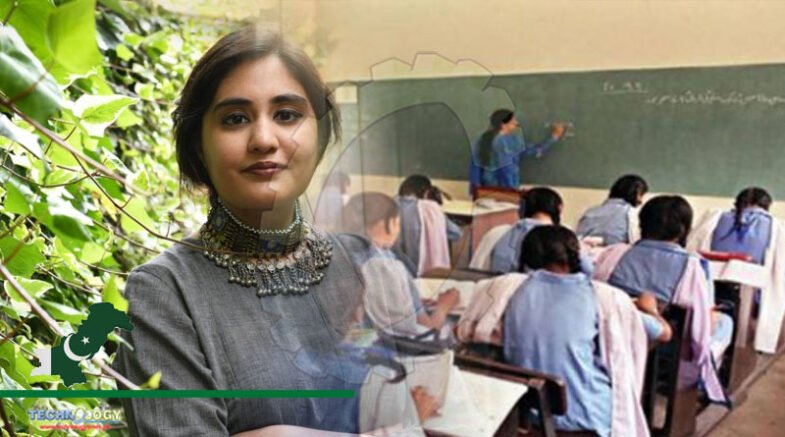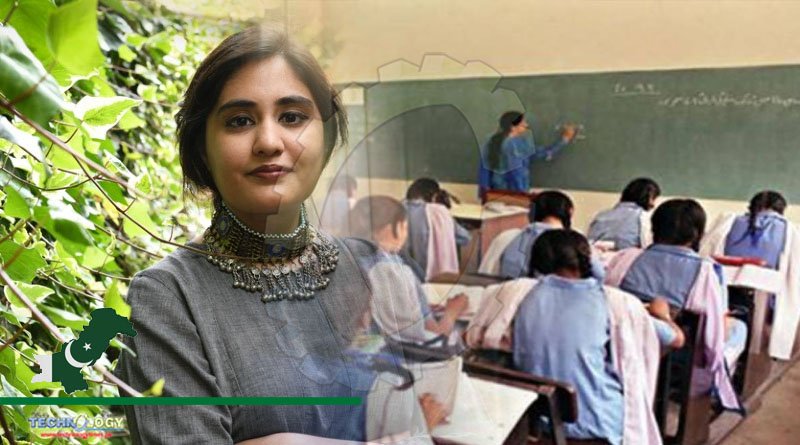When it comes to science education, you don’t always have to rely on fancy science laboratories and expensive materials. Lala Rukh Fazal-Ur-Rehman is the founder and CEO of the social enterprise, Science Fuse, and a Malala Fund Education Champion. She explains the science education challenges and issues.

When it comes to science education, you don’t always have to rely on fancy science laboratories and expensive materials. I have taught science for almost 12 years in schools and kindergartens in Norway, at the 94-year-old Science Museum in London and during the last few years in communities and schools across Pakistan from Skardu to Larkana. In my work across Pakistan these last five years, if one thing has stood out strongly, it is the importance of using the ordinary to engage communities with science.
This learning came to the fore during the pandemic. For the first time since we had begun working in Pakistan, we had no choice but to pause and rethink how to engage with children, families, teachers and schools. New ways to connect with them were required. This wasn’t easy at all.
Eventually, despite the many limitations related to digital connectivity in most parts of Pakistan, we took a leap of faith and began engaging our partner schools and their students digitally.
While schools in Lahore and Karachi were fairly easy to engage, several challenges greeted us in Balochistan. Teachers at one of the all-girls schools in Khuzdar had limited digital literacy skills and were not allowed access to smartphones by their families owing to the prevalent gender norms.
This meant that we couldn’t possibly connect with school teachers, who were our only means to reach students. There was also limited digital access in their area, which added to our problems. This issue would have stayed unresolved if we hadn’t been working with a strong community leader like Sumera Mehboob who led the school in question. Sumera leveraged the trust she had built in her local community to convince families of the importance of equipping female teachers with digital devices and skills, especially at a time when children were facing critical learning losses.
With this issue resolved, we initiated a two-month programme called, Scientists of Tomorrow. This programme entailed stories based on the lives of remarkable female scientists and intriguing questions (e.g., ‘Are viruses alive?’) that were designed to nurture children’s curiosity.
The stories of female scientists further helped the students — and their teachers — to appreciate the contributions of remarkable women from around the world, including Pakistan, who had shaped our understanding of the universe despite the gender barriers that they faced. Within two years, this library of stories on scientists and scientific phenomena grew to a total of 120.
These stories were scripted in Urdu and English, their podcasts recorded, and were accompanied by follow-up activities that allowed children to wonder, investigate, create and have meaningful conversations with their peers, family or community members. Once the scripts, recordings, and activities were ready, we started sending them off to teachers in Khuzdar and later shared them with hundreds of government and low-cost private schools across small cities in the Punjab.
We used WhatsApp as a tool to impart science education, send these lessons, receive reflections and helped teachers solve problems. They were given training and tasked to engage students in their schools and communities every week using these stories as science lessons.
Since we were engaging students via local teachers, this allowed us to nurture ambassadors, who even after the programme ended would be well-equipped to create learning resources on their own and continue meaningful science engagements within their communities.
Big telescopes and fancy robots can be enticing for children and adults alike. However, these should not be the only points of reference that come to mind when key stakeholders think about ways of engaging children from disadvantaged communities with science.
Related to this, we also conceived Gul Rukh, a character embodying a 10-year-old science enthusiast from Pakistan who likes to do science using the ordinary, anywhere and everywhere she goes. She dons a printed mustard-coloured shalwar kameez with sneakers and isn’t afraid to get her hands messy.
Gul Rukh encourages readers to explore the world around them. Titled, Gul’s Science Adventures, we started writing recipes for experiments. This essentially meant that instead of giving cooking instructions, through Gul, readers learned to design rockets using recycled materials, make instant ice cream using salt instead of a freezer, concoct delicious candy on their stoves, guess anyone’s birthday using the power of mathematics and so much more.
Gul Rukh’s adventures were recipes that we then scripted and video-recorded to be used directly by children aged 7–14 years, as well as their parents and teachers. This meant that we could now send teachers video lessons and scripted lesson plans with step-by-step instructions. These allowed them for science education using hands-on experiments that were playful, culturally relevant and investigative. These resources can also be used by parents, who can act as facilitators to encourage the process of discovery and cultivate wonder among children.
After a year of working closely with Sumera and her school, she told us that our intervention had helped transform science education in their school on a shoestring budget. They had always dreamt of building a science lab at their campus but did not have enough funds to do so. They had earlier thought that improving the quality of science engagement for their community would have to wait until they could raise considerable funds.
But after a year-long partnership with Science Fuse, they knew better. They now had tools, expertise and teaching resources to continue building a strong science identity among their students. And, most importantly, they knew that this could be done with limited resources. Of course, with more, one could do more, but now they knew that they could introduce great teaching practices in science even with less by using the seemingly ordinary things found in their local environment.
When it comes to science education, you don’t always have to rely on big wow moments that require fancy science laboratories and expensive materials. On the contrary, sometimes using these materials can actually prove counter-productive and alienate children from marginalised groups and communities from STEM subjects.
Big telescopes and fancy robots can be very enticing for children and adults alike. However, these should not be the only points of reference that come to mind when key stakeholders (think educators, policymakers, and government officials) think about ways of engaging children from disadvantaged communities with science.
Equipped with this important learning, earlier this year, we joined hands with the Ministry of Federal Education and Professional Training’s STEAM Pakistan project. Through this programme, we have taken our model of teaching science through the ordinary to 10 public schools in the federal area.
While the engagements are still in their infancy, early observations reveal a clear spike in interest among students in science and mathematics now that they are being taught giving the textbook a backseat.
We hope that with the introduction of this new teaching approach in public classrooms, we will be able to create a ripple effect that will make science and mathematics learning accessible to students in a way that these subjects transition beyond the classrooms and become a wholesome part of students’ everyday lives.
Originally published at The News
